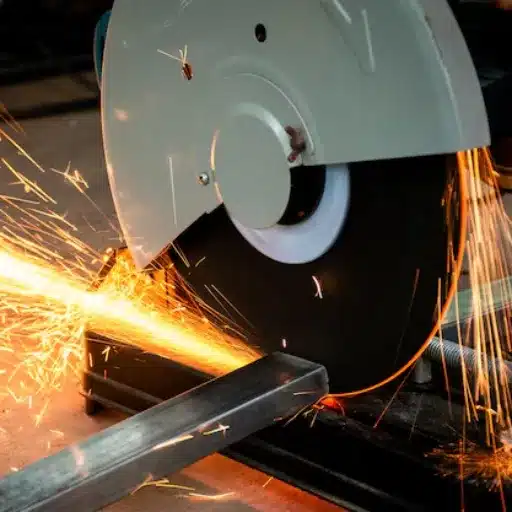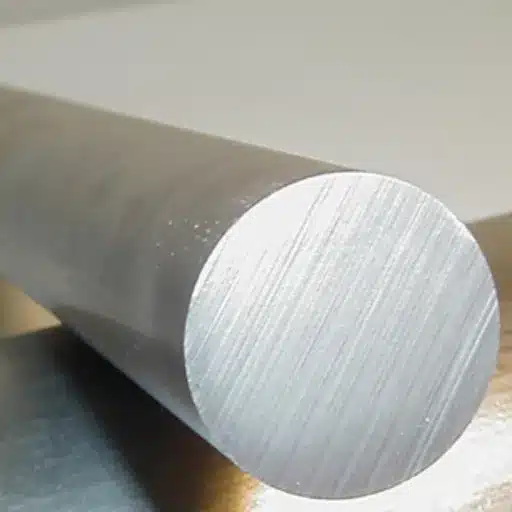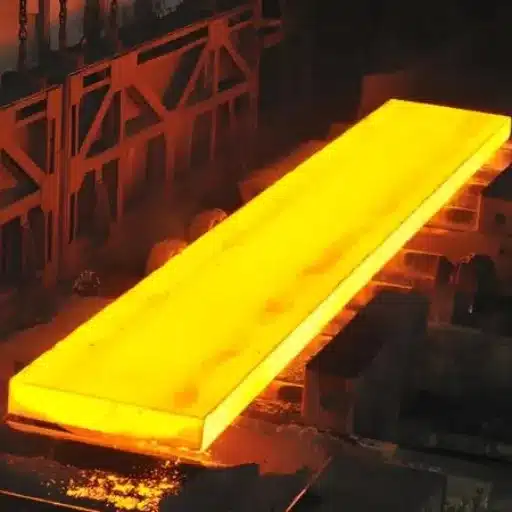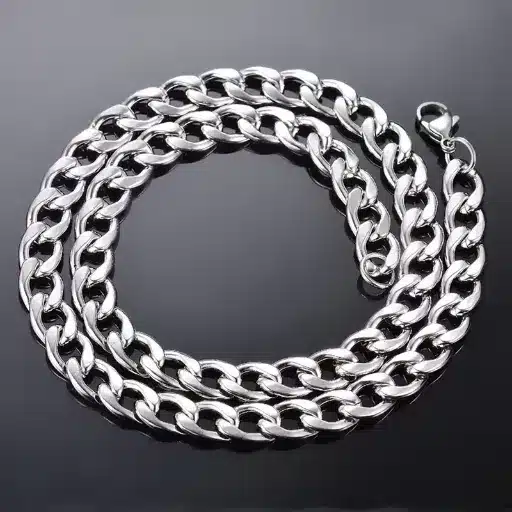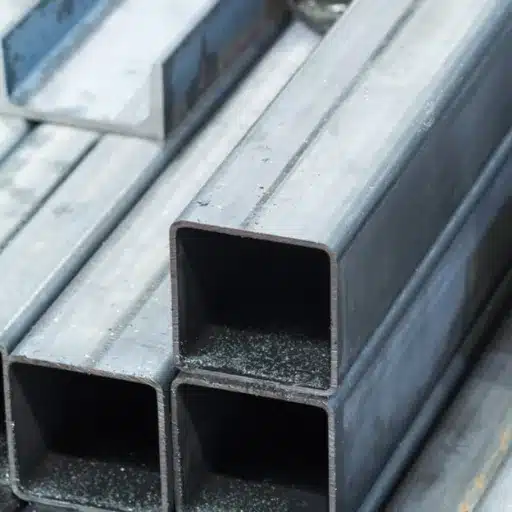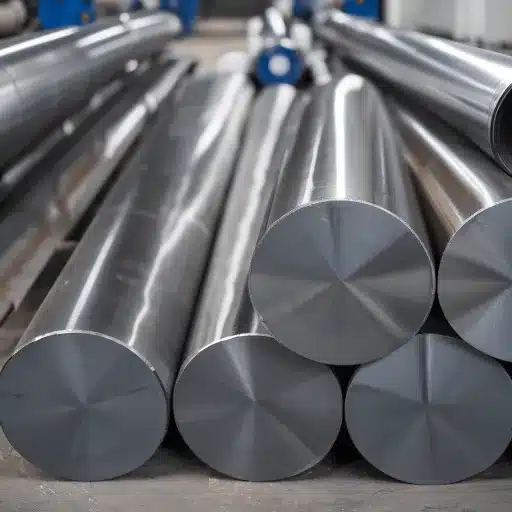The steel used for manufacturing pipelines is vital in the energy industry because it is the primary material for piping systems that move gas, hydrogen, and other essential materials through long distances. This guide is designed to explain pipeline steel, its significant features, and how it is manufactured, mainly focusing on the shifting attention to new materials owing to the hydrogen revolution. In addition, we will address the fundamental components necessary to achieve safety and efficiency in pipelines, the difficulties of transporting hydrogen, and the pipeline and innovation technology. By the end of the reading, this guide intends to explain the importance of pipeline steel in developing sustainable energy transportation.
What is pipeline steel, and why is it important?
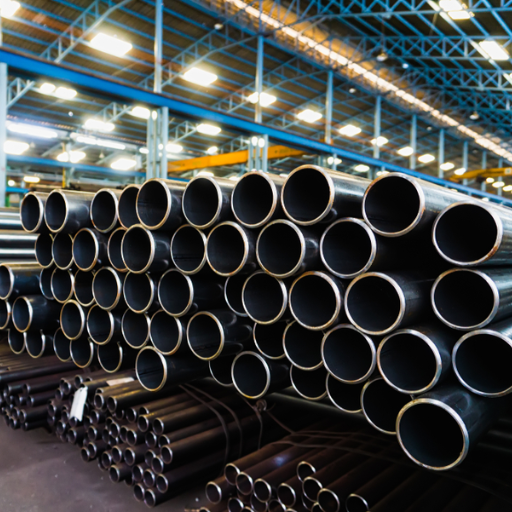
Pipeline steel is a particular variety of steel processed to be used in the construction of pipelines designed to carry hydrogen gas and other liquids. The steel is helpful due to its characteristics, which allow it to withstand extreme pressure and corrosion and be structurally sound along a long distance even when different environmental conditions prevail. Pipeline steel of great quality enhances the safe, efficient, and durable transportation of energy, making it one of the most essential modern elements in striving for sustainable energy infrastructure.
Definition and characteristics of pipeline steel
Pipeline steel is designed for the adequate transportation of gases and liquids, mainly hydrogen, with safety in mind. Its most important features are high strength, excellent weldability, corrosion, and environmental condition resistance. This type of steel is crafted to endure prolonged periods of high pressure, preserving the integrity of energy pipelines. Dependable pipeline steel helps reduce risks and guarantees performance over time, contributing to sustainable energy infrastructure development.
Role of pipeline steel in oil and gas industries
Pipeline steel is essential in the oil and gas industries for superior and optimal transportation of resources over great distances. Its advanced mechanical properties, such as tensile strength and an extensive range of toughening (TRS increases from 450MPa to 700MPa depending on the grade), allow it to withstand tremendous pressure and not fracture. Besides, its ability to resist corrosion protects the pipelines from environmental degradation, especially in severe conditions like offshore or chemically active regions. Modern pipeline steels such as API 5L X70 or X80 grades are ductile and weldable, enabling seamless construction and withstand well over 15MPa of pressure. These characteristics help enhance the life and reliability of the oil and gas infrastructures.
Importance of Pipeline Steel in Gas Transmission
Pipeline steel is vital for efficient and safe gas transmission systems. The material’s strength, resistance to corrosion, and durability allow pipelines to withstand high pressures and harsh environmental conditions. API 5L X70, X80, and even X100 steels are classified as modern pipeline steels, exceptionally high strength low alloy (HSLA) types designed for 15 to 20 MPa or higher for gas transmission. These grades can offer yield strength between 485 MPa (X70) and 690 MPa (X100), which covers a wide range of long-distance transportation requirements.
Weldability and toughness are other important attributes because these steels retain their ductility and resistance to cracking even at low temperatures, which is essential for arctic or sub-zero countries. Protective coatings with advanced metallurgical designs reduce oxidation and wear, helping the steel perform better for years. Corrosive resistance is very important because pipelines are usually situated offshore or underground.
Not only does the application of modern steel grades enhance the efficiency of gas transmission, but it also lowers material expenses because thinner walls that can withstand greater pressures are more cost-effective. This combination of advanced properties ensures long-term gas pipeline integrity around the world while simultaneously keeping economic viability at the forefront.
What types of steel are used in pipeline construction?
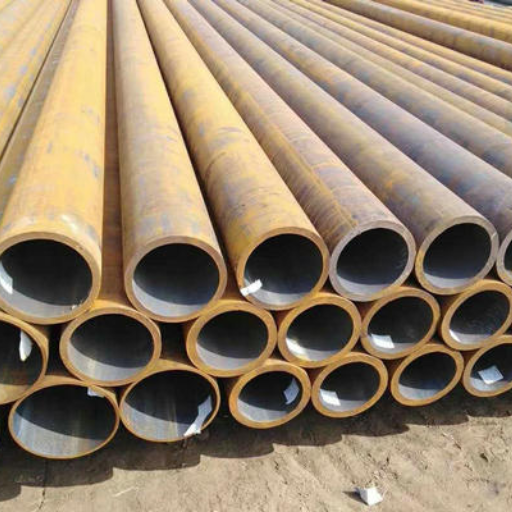
Pipeline construction involves using several types of steel, including carbon steel, alloy steel, and stainless steel. Carbon steel is the most common because of its low cost, great strength, and ability to withstand high pressures. Alloy steel assisted with manganese, chromium, or nickel elements has excellent toughness and is more resistant to wear and corrosion, making it useful in harsh environments. Although more expensive, stainless steel is used for pipelines that must endure highly corrosive substances because of its unmatched ability to resist corrosion. Specifics on the pipeline, such as pressure, temperature, and transport medium, determine the selection of steel type.
Carbon steel vs. stainless steel for pipelines
When selecting carbon steel and stainless steel for pipelines, it is important to understand their technical and specific application differences.
- Corrosion Resistance
- Stainless steel: Pipelines situated in very corrosive environments such as chemicals, seawater, or high moisture is greatly aided by stainless steel, which has a high level of corrosion resistance owing to the presence of chromium (10.5% or above).
- Carbon Steel: Carbon steel, in contrast, lacks stainless steel’s exceptional corrosion resistance. While carbon steel is remarkably strong and durable, it is unable to withstand highly corrosive environments without treatment or protective coating. Carbon steel performs efficiently well in less aggressive dry environments but requires external protection, such as galvanization, in harsher environments.
- Strength and Durability
- Carbon Steel Provides unmatched tensile strength and can withstand high magnitudes of pressure. Carbon steel grades such as ASTM A106 and API 5L have tensile strengths of 400 MPa to 750 MPa and can clearly exceed 750 MPa.
- Stainless Steel: Strong stainless steel, particularly key grades 304 and 316, withstanding 485 MPa and 515 MPa, respectively, tends to mark its strength by prioritizing toughness and resistance to deformation.
- Cost
- Stainless Steel is more expensive due to the inclusion of alloying elements such as chromium and nickel, which makes it less ideal for large-scale projects unless its benefits of corrosion resistance and long life are required.
- Carbon Steel – Is relatively cheaper and readily available, making it economical for pipeline installation in moderate regions.
- Application
- Stainless Steel is used in corrosive sectors, such as chemical processing, pharmaceuticals, and food and beverages. Grade 316 is popular for marine and chloride-rich environments.
- Carbon Steel is used in the oil and gas sectors, water supply piping, and HVAC, especially where the environmental conditions are mild and non-corrosive.
- Thermal and Temperature Resistance
- Stainless Steel has an edge over carbon steel because it retains its strength and ability to resist scaling at higher temperatures, which makes it better for performance. Grade 304 retains strength and resistance up to 870 degrees Celsius.
- Carbon Steel: Can withstand high pressures as well as moderate temperatures; however, prolonged exposure to high heat may make its structure weak.
Technical Parameters at a Glance:
| Property | Carbon Steel | Stainless Steel |
|---|---|---|
| Tensile Strength | 400 – 750 MPa | 485 – 515 MPa |
| Corrosion Resistance | Low to Moderate | High |
| Temperature Tolerance | Moderate (< 500°C) | High (up to 870°C) |
| Cost | Low | High |
| Common Grades | ASTM A106, API 5L | 304, 316 |
Engineers can make informed decisions based on application needs, project budget, and environmental considerations by weighing these factors.
High-strength low alloy (HSLA) steels in pipeline applications
Pipelines often use high-strength low alloy (HSLA) steels because of their unique mechanical properties and overall durability. These steels allow for constructing thinner and lighter pipelines due to their high tensile strength and excellent toughness compared to standard carbon steels. HSLA steels also have unmatched weldability, corrosion resistance, and super high and low-temperature resistance, making them the best option for long-distance transportation of oil, gas, and other fluids. Cost efficiency with structural integrity is essential when discussing demanding environments for HSLA steels.
API 5L and ISO 3183 specifications for line pipes
Such specifications include materials’ characteristics, production techniques, and quality and safety testing to be done before and during the fabrication of the desired product. API 5L’s subdivisions, PSL1 and PSL2, have different allowances for chemical makeup and mechanical values alongside PSL2, adjusting the more stringent testing protocols. Typical technical parameters include yield strength, e.g., for PSL1 is 245 MPa, with 485 MPa being higher for PSL2, tensile strength between 415 to 760 MPa, and specific regulations on the amounts of chemicals such as carbon < 0.28% for PSL2. API 5L is parallel to ISO 3183 but is recognized as being more regionally based. All these standards’ main objectives are to guarantee the reliability of pipelines in extreme conditions of very high pressure and high/low temperatures.
How is pipeline steel manufactured?
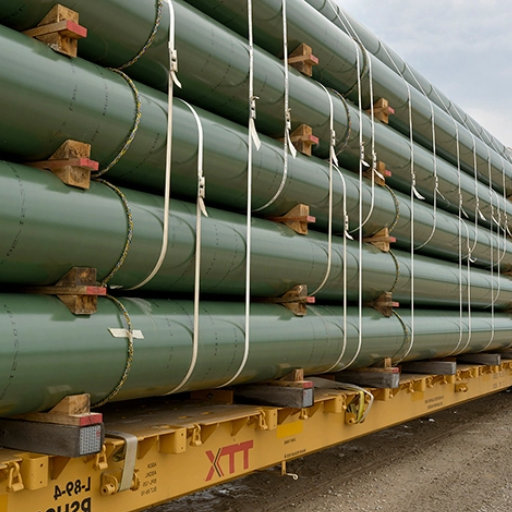
Pipeline steel is produced from a process starting with strong and tough and resistant to rough conditions raw materials. The raw materials, like ore of iron, alloying tools, scrap steel, etc, are first selected and melted. The steel is then poured into a mold set to solidify. These slabs advanced through rolling at exceedingly high temperatures to acquire the targeted qualities and thickness. Controlled cooling and heat treatment subsequently increase the steel’s strength, toughness, and other mechanical and physical properties. This care and detail exceeds the demanding thresholds of Pipeline application steel.
Hot rolled steel production process
Hot rolled steel is produced by heating the steel above its recrystallization temperature. This makes the steel easier to shape and form. The process starts with large rectangular slabs or billets of steel, which are heated to high temperatures and rolled through a series of rolling mills. Each pass through the rolling mill reduces its thickness while improving its uniformity. The rolled steel is then left to cool naturally at room temperature. This cooling method allows for some deviation in size and shape but is cost-effective. This approach is better for projects requiring less demanding surface finish and precise dimensions, like structural components and heavy machinery.
Welded vs. Seamless Pipe Fabrication Methods
There is a clear distinction between the processes of the welded and seamless pipe fabrication techniques, which further defines their applications and limits their technical characteristics.
Welded pipes: Their seams are welded after a steel plate or strip is rolled and brought into a cylindrical form. Types of welded pipes include Electric Resistance Welding (ERW) and Longitudinal Submerged Arc Welding (LSAW). These pipes are economical to manufacture and have a phased wall thickness. Due to the seam, the pipe may not withstand extreme pressure, making it the weakest point of the pipe.
- Applications: Useable for low to moderate pressure ranging from water pipelines, basic frameworks, and structures to general transportation of fluids.
- Key Parameters: Withstanding the wall thickness unbalance of 0.1 mm, range of diameter 1/8” to 80”, and tolerating pressure up to 20 MPa based on grade is also a criterion (depending on grade).
Seamless Pipes: These are made out of solid steel billets with no seams after being externally pre-fabricated. Being seam-free gives the pipe enhanced strength and better uniformity. They suit high-pressure, high-stress, and high-temperature environments.
- Applications: It is used widely in the oil and gas extractive industries, power plants, and chemical processing plants where durability is a necessity.
- Key Parameters: They can withstand high resistance against corrosion and bend, while the diameter ranges from 1/8 to 24 inches, and the pressure is up to 50 MPa.
Both methods have pros and cons, and their use fully depends on the needs of the particular application, such as cost, high temperature, and elevated pressure.
Chemical Composition and Heat Treatment of Pipeline Steels
My current knowledge suggests that pipeline steels contain a blend of iron, carbon, and alloying components, including manganese, nickel, chromium, and molybdenum, increasing strength, toughness, and corrosion resistance. Mechanical properties depend on heat treatment processes, such as quenching and tempering, which are critical for their fine microstructure, increased hardness, and sufficient ductility to withstand pressures and changes in environmental conditions. The microstructure and treatments are defined according to the operational requirements regarding temperature ranges and corrosive chemicals encountered.
What are the key properties of pipeline steel?
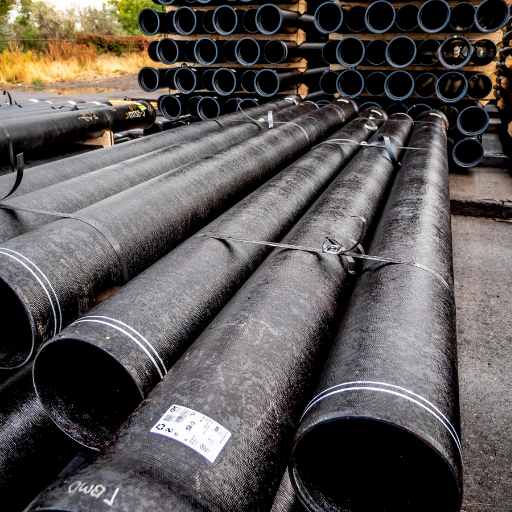
Pipeline steel is distinguished by its high strength, toughness, and weldability. It is also resistant to corrosion, cracking, and rough environments, making it useful in harsh conditions and under high pressure. Achieving these attributes stems from a custom-designed chemical composition and specific heat treatment processes, ensuring the steelworks are under various operational demands.
Toughness and tensile strength requirements
Pipeline steel is built to resist ductile and is durable with extreme conditions to meet toughness and tensile strength requirements. In my understanding, achieving properties is a matter of microstructure optimization via alloying and thermal treatment. High toughness allows the steel to sustain impacts without breaking, while sufficiently high tensile strength enables it to endure high pressures and levels of stress in harsh environments. With sound engineering materials, technological innovations, and industrial standards, pipeline steel efficiently serves its purpose in critical applications.
Corrosion resistance in pipeline steels
As for corrosion resistance in pipeline steels, it’s achieved by a complexion of protective coat, surface treatment, and alloying. Nickel, chromium, molybdenum, and other alloying materials are used to improve their environmental corrosion resistance. For instance, chromium from 0.3% to 1% in the alloy enhances passivation, thus forming a protective oxide layer on the surface. Certain coatings such as epoxy or polyethylene are then placed on the surface of steel to protect it from moist and chemical attack. Protection from cathodic systems via sacrificial anodes or impressed current further reduces the corrosion rate by stopping electrochemical reactions. These methods guarantee the pipe does not fail and can function reliably in various environmental conditions.
Weldability and joining techniques for steel pipes
The techniques for welding and joining steel pipes require attention to the merits and intended usage of the material. In my opinion and experience, some of the most common methods used are arc welds, MIG, TIG, and stick welds, all of which provide good joints that are strong and durable. Since it is easier to clean the surface of the pipe and choose a filler material, it allows for better welds. In addition, flanges and threaded joints are standard methods used when the welded options are not preferred for ease of maintenance or other reasons, such as in environments where welding is impossible. In the end, the joining method of choice will depend on the material of the pipe, its intended purpose, and the conditions under which it will be used.
How do manufacturers ensure pipeline steel quality?
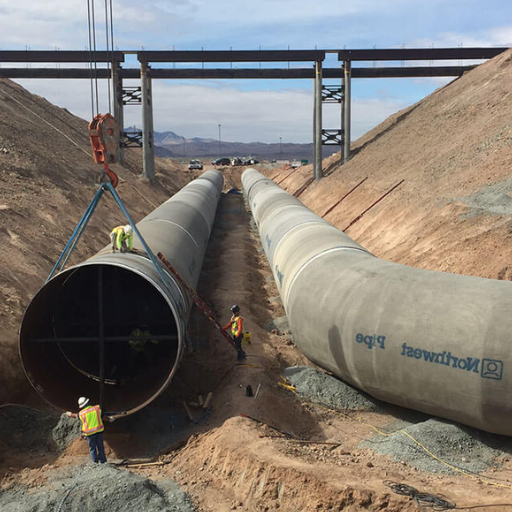
Monitoring the quality of the pipes in the manufacture of steel lies in the strict selection and production of raw materials, along with the follow-up tests that follow after the manufacturing. These raw materials are chosen extremely carefully to meet a particular set of requirements regarding the materials’ strength and durability. The way the steel is produced also matters as elements like controlled rolling and heat treatment are used to refine the microstructure of the steel. Value control with ultrasonic tests, X-ray checks, and mechanical property controls are done to confirm that the steel fulfills the required industry standards and safety regulations. Ensuring these practices are followed dramatically improves the quality of the pipeline steel.
Testing and inspection procedures for steel pipes
To maintain the reliability and safety of our steel pipes, we adhere to a specific sequence of tests and inspections. The first step is an ultrasonic test, which finds flaws that are not visible and can damage the pipes internally. This technique assesses without causing any harm to the pipe. Secondly, X-ray or radiographic inspections are performed to find any deficiencies in welding or other potentially vulnerable pipe parts. Thirdly, the performance of any material property tests, including assessable tensile strength, hardness, and others, is done to confirm that the material meets the industry’s primary requirements and its stability and performance specifications. This process ensures that the pipes meet industry standards for quality and safety.
ASTM Standards and Quality Control Measures
The ASTM standards are criteria that guarantee the quality, effectiveness, and safety of the materials and tools needed in industrial areas like the manufacturing of steel pipes. The dominating standards for steel pipes are ASTM A53, ASTM A106, and A333. These standards cover different aspects, including the material composition of the pipes, their geometrical features, maximum allowed tensile strengths, and temperature limits.
- Material Composition: Limiting the proportions of certain elements, such as carbon, manganese, and other bonding chemicals, can sometimes assure the resistance of materials to corrosion and other environmental conditions within the boundary of each standard.
- Dimensional Accuracy: Standardized pipe diameter, length, and wall thickness tolerances are defined to allow for application versatility. An example is the tolerance on the pipe diameter set by ASTM A106 Grade B, which is ±0.5%.
- Mechanical Properties: Certain standards define the minimum acceptable level of mechanical properties such as yield and tensile strength. For example, ASTM A53 Grade B has minimum values of tensile strength of 415 MPa (60,200 psi) and yield strength of 240 MPa (35,000 psi).
- Temperature Tolerance: Different pipes for various applications must meet the set thermal performance requirements. An example is ASTM A333, which was set for low-temperature services.
- Testing and Inspection: Compliance is verified using strict quality control methods, including hydrostatic checks, non-destructive tests like ultrasound or radiography, and the earlier-mentioned mechanical property evaluation.
Compliance with such ASTM norms and stringent quality control ensures that manufacturers have cost-effective steel pipes that can be utilized in different industries without compromising safety and functionality.
Certification and Traceability in Pipeline Steel Production
Establishing certification and traceability in pipeline steel production is crucial in ensuring quality and regulatory compliance. As a manufacturer, we self-declare compliance with internationally accepted standards like ASTM, API, and ISO, which bases the certification on material properties and performance and requires extensive testing and documentation. Achieving traceability comes from unique markings and records detailing each pipe’s production history, from raw material procurement to final inspection. This process guarantees product reliability and ensures accountability and prompt action in the event of product defects and recalls.
What are the latest advancements in pipeline steel technology?
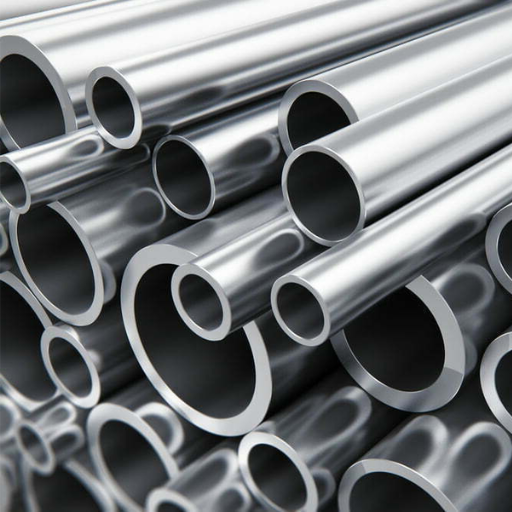
Developments in pipeline steel technology over the recent past have targeted improvement in strength, durability, and efficiency while having a less negative impact on the environment. High-strength, low-alloy (HSLA) steels offer performance with lower-weight materials that can be economically transported and installed. Innovative corrosion-resistant coatings and materials, like fusion bonded epoxy (FBE) and polyethylene, further extend the lifespan of pipelines in aggressive environments. In addition, the improvements in automated welding and inspection technologies allow for more precise and reliable joints, making construction processes safer and faster. Meeting the requirements for modern energy infrastructure and complying with strict industry standards is now achievable with these advances.
High-strength steels for deep-water pipelines
Using high-strength steels is most important in the case of deep-water pipelines because, beyond specific depths, the pressure and other conditions are harsh. These types of steels are known to outperform in regards to their mechanical qualities because they can flex with a tremendous amount of force caused by the seabed and underwater currents while still exhibiting high tensile strength. Also, sophisticated metallurgical compositions provide resistance to cracking and stress corrosion, posing enormous risks to subsea conditions. The addition of high-strength steel grades makes projects cost-effective by having lower safeness and durability, which is essential in transporting energy from deep waters.
Corrosion-resistant alloys for aggressive environments
Corrosion-resistant alloys (CRAs) play an essential role in maintaining pipelines, equipment, or structures in highly corrosive environments, such as those with hydrogen sulfide (H₂S), carbon dioxide (CO₂), and saline water. They are capable of resisting chemical degradation, pitting, and crevice corrosion, which allows for their integrity and longevity even in the most strenuous conditions. Some main alloys include nickel-based alloys, duplex stainless steels, and super-austenitic stainless steels.
Essential Characteristics of CRAs:
- Corrosion Resistance: It performs with high efficiency in the presence of H₂S and CO₂, which is crucial during sour gas conditions.
- Strength: Effective tensile strength ranges from 550 MPa to 900 MPa for high-pressure systems.
- Temperature Tolerance: Regions of up to 600°F (316°C) depending on specific alloy composition.
- Weldability: Greatly improved to facilitate strong and non-defective joints in pipeline systems.
Utilization of CRAs significantly improves the operator’s ability to reduce maintenance costs while increasing security against environmental damage due to material failure. This ensures effective and secure oil and gas extraction, refining, and chemical processing operations.
Steel Innovations for Hydrogen Transportation
For example, the need for modern steel solutions to hydrogen embrittlement and high-pressure containment poses challenges for transporting hydrogen. As an expert in this area, I would prioritize using materials designed with optimum strength and leading-edge efficiency. For high-strength steel alloys, toughness and resistance to hydrogen-induced cracking is vital. Of great importance are:
- Hydrogen Embrittlement Resistance: Microalloyed steels or nickel-based alloys are steels with a lower level of cracking susceptibility.
- Pressure Endurance: Yield strengths within 500 MPa to 1200 MPa for safe containment within transportation and storage tanks at pressures up to 100 MPa.
- Fatigue Resistance: Performance under cyclic loading conditions is superior to withstand repeated pressurization and depressurization cycles.
- Weld Integrity: Optimized welding techniques create seamless connections, constructing pipelines and vessels without discontinuities or weak points.
The industry will ensure safe operation while fostering efficiency and sustainability for hydrogen use as an energy carrier by generating focused steels with specific attention to embrittlement.
References
- Hydrogen in pipeline steels: Recent advances (ScienceDirect) – Discusses using mid-strength pipeline steels for hydrogen transport and related challenges.
- Hydrogen Pipelines (U.S. Department of Energy) – Provides insights into converting natural gas pipelines for hydrogen transport.
- Steel pipelines are ‘fundamentally suitable’ for transporting hydrogen (Hydrogen Insight) – Explores the suitability of existing steel pipelines for hydrogen transport.
Frequently Asked Questions (FAQ)
Q: What is the significance of natural gas in pipeline transportation?
A: Natural gas plays a crucial role in pipeline transportation as it is one of the primary fuels transported through gas pipelines. Its efficient delivery relies on the integrity and design of the steel pipeline used to transport it.
Q: What are the different steel grades used in gas pipelines?
A: The steel grades commonly used in gas pipelines include X42, X52, X60, and X70. Each grade indicates the strength and durability of the material, which is essential for withstanding high pressure and ensuring safety in natural gas transportation.
Q: What is the difference between welded steel pipes and seamless pipes?
A: Welded steel pipes are made by rolling steel plates and welding them together, while seamless pipes are formed from a solid round steel billet that is heated and pushed or pulled over a form until the steel is shaped into a hollow tube. Welded pipes are typically less expensive than seamless pipes but may have different structural properties.
Q: How does alloy steel differ from carbon steel in pipeline applications?
A: Alloy steel contains additional elements, such as nickel, chromium, or molybdenum, which enhance its properties. These make it more resistant to corrosion and better suited for high-strength applications compared to standard carbon steel, which is primarily composed of iron and carbon.
Q: What is galvanized steel, and how is it used in pipelines?
A: Galvanized steel is steel coated with zinc to prevent rust and corrosion. It is often used in pipeline applications where exposure to moisture and corrosive environments is a concern, enhancing the longevity of the steel pipeline.
Q: Who are the major pipe manufacturers in the steel industry?
A: Major pipe manufacturers include companies like Tenaris, Vallourec, and U.S. Steel, which produce various steel products, including welded and seamless steel pipes used in oil and gas pipelines.
Q: What factors determine the wall thickness of a steel pipeline?
A: The wall thickness of a steel pipeline is determined by several factors, including the type of fluid being transported, the pressure within the pipeline, environmental conditions, and the overall design requirements of the pipeline system.
Q: What types of steel products are used to construct gas pipelines?
A: Various steel products, including carbon steel pipe, alloy steel pipe, stainless steel pipe, and structural steel, are used in the construction of gas pipelines. These materials are chosen based on their mechanical properties and suitability for the specific application.
Q: How does pipeline design impact the safety of natural gas transportation?
A: Pipeline design is critical for the safety of natural gas transportation. It involves careful consideration of factors such as pressure ratings, material selection (including steel grade), wall thickness, and corrosion protection measures to prevent leaks and failures.

